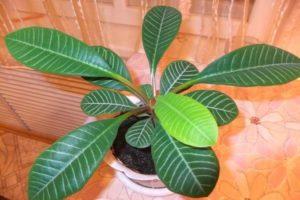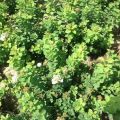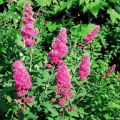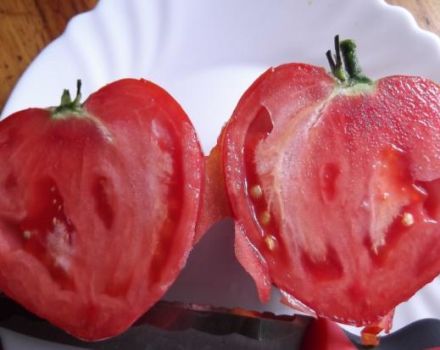Description and characteristics of Argut spirea, planting, cultivation and care
Spiraea arguta (also known as meadowsweet) belongs to the category of beautifully flowering shrubs that are grown to decorate the garden. The exquisite beauty of this ornamental plant came to him thanks to its belonging to the Pink family. Arguta is a type of spirea that grows not only in the forest-steppe and forest zones, but also in the northern parts of the mountainous regions, as it is frost and moisture resistant. It can be found both in the Himalayas and in Mexico.
General information about the plant
Arguta is a hybrid, for the creation of which 2 species of Spiraea were used: multiflorous and Thunberg. An adult plant reaches 2 m in height, and the length of its branches sometimes reaches 3 m. The rich green leaves have a lanceolate shape, they are narrow with sharp serrations along the edges, and therefore this type of spirea has a second name - sharp-serrated. The branches are thin, gracefully bending in the form of an arc. White flowers cover meadowsweet from late May to late June. Formed on plants of the 2nd year. They represent an elongated umbrella-type inflorescence.
The flower is 8 mm in diameter. It has 5 petals with a large number of stamens, giving the inflorescence visual fluffiness. During the period of powerful flowering, the leaves hide under an abundance of snow-white buds, and the branches bend under their weight. Flowers exude a honey scent. Arguta grows slowly: 10-20 cm per year. But despite this, meadowsweet is still pruned.
Varieties and types of spirea Argut
Arguta is a spring-flowering or early species of Spiraea, as the flowering period is in May-June.
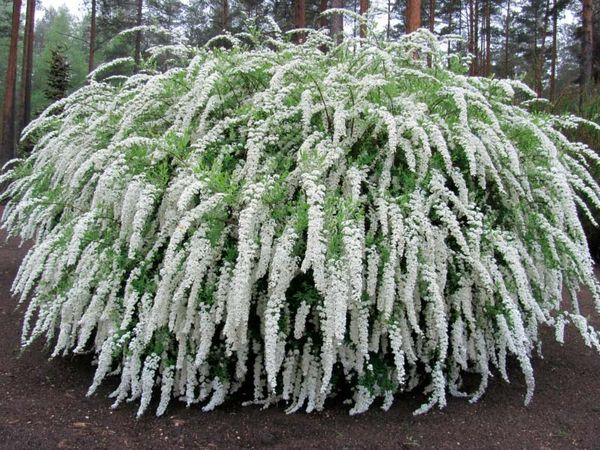
About 100 types of spirea are known, the most popular of which are:
- Gray, 2-meter tall and pale white inflorescences;
- spirea Wangutta, surprising with blue-green color of leaves and deep white color of buds;
- Crenate, very short, less than 1 m, with greenish-gray leaves and white-yellow inflorescences;
- Oak-leaved, about 2 m with rich white buds;
- Medium, 1-2 m in height;
- Japanese, with pink flowers, upper green leaves and bluish lower ones;
- Birch-leaved, 0.6 m high, with pineal pink buds and leaves resembling birch in shape;
- Arguta (another name is sharp-toothed), having a height of 1.5 to 2 m and spectacular hanging branches of the plant, densely covered with baskets of snow-white petals.
Compacta is a popular variety of Spiraea arguta among gardeners, which was developed in Germany in the 19th century. The height and circumference of the crown of the plant are 1.5 m.Distinguishing features:
- powerful flowering;
- decorative spherical plant shape;
- long growth;
- instability of the plant to frost.
Small numerous white inflorescences of spirea abundantly cover graceful branches that fall to the ground, therefore gardeners often call her a gentle beauty.
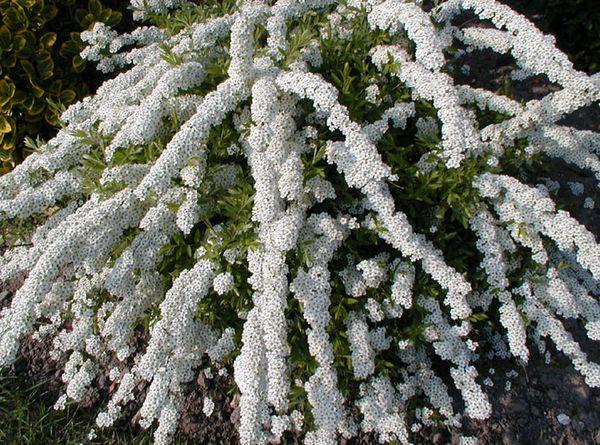
Growing conditions and planting
Arguta is an undemanding plant, but in order for it to take root, you need to follow a number of care rules:
- It is necessary to plant by dividing a 3-4-year-old plant, until the roots are too bulky, away from groundwater, in an area open to sunlight, otherwise the flowering will not be powerful. It is better to do this in September in cloudy weather.
- Pick up fertile soil, but clay and loamy is also acceptable.
- To accelerate the adaptation of the spirea, a composition of turf, peat, sand is placed in the landing hole, and a drainage layer is also made (for example, broken brick).
- In a spirea dug out for planting, the roots are thoroughly washed with water, then they are divided into 3 separate parts with a pruner, so that each has 2-3 powerful stems. In this case, the cordlike roots of the plant are trimmed.
- Then the spirea is lowered into a hole, covered with soil, lightly tamped, and watered in several stages.

In case of subsidence of the soil, spirea is additionally sprinkled with earth, and after half an hour, it is watered with liquid humic fertilizer. As further care, you need to follow the rules for watering the plant, pruning and preventing pest control.
Bush care tips
So that the flowering is plentiful, and the argument does not lose its decorative beauty, it is worth using a few simple recommendations for caring for the plant.
Relation to temperature
Arguta endures the summer heat and winter frost quite steadily. Even a 40-degree frost for a plant will not be destructive. It is enough to cover it with foliage, as well as observe the basic principles of pruning, watering and fertilizing the soil, and carry out these manipulations in a timely manner in accordance with the temperature regime.
Soil and fertilizers
Arguta does not require frequent fertilization of the soil. If nutrients have been added during planting in sufficient quantities, then this amount will last for 1 year. Additionally, fertilizers need to be applied only after cutting all the shoots almost at the root. To give the spirea strength, a nutrient mixture of organic matter (50-70 cm thick) and mineral fertilizers (for example, "Kemira") is prepared.
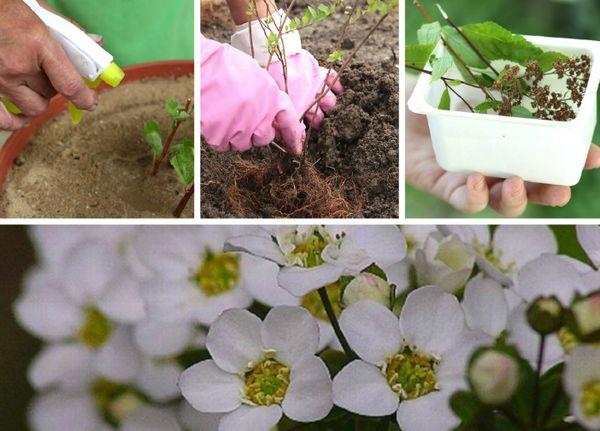
Watering and moisture
Spirea must be systematically watered, but soil moisture should be moderate, this is especially important for mulched soil. During the summer heat or during the drought period, watering is carried out 1 time / 3 days, and in normal weather and moderate rainfall - 1 time / 1 week. Usually, about 15 liters of water are used at a time to moisten 1 bush. At the end of watering, the soil is mulched to prevent crust formation on the soil surface.
Pruning
Arguta is a spring-flowering Spiraea species, and therefore hardly needs pruning. But this does not exclude sanitary measures that are carried out after flowering. During this period, remove dry and damaged branches, shoots, the age of which has exceeded 5 years.
If the formation of a shrub is required, then it is performed in March, removing frozen and weak branches and leaving the strongest. But in order to completely rejuvenate the spirea, all old branches are cut off almost to the root. To preserve the decorative properties, spireas cut off long-flowering shoots. This procedure is carried out every 2-3 years.

Pests, diseases and prevention
Arguta is a hardy plant, and it is not afraid of ordinary shrub diseases: infectious diseases in meadowsweet are extremely rare. Sometimes gray mold or some types of spotting are affected by spiraea, for getting rid of which fungicidal preparations are used ("Fundazol", "Fitosporin", Bordeaux mixture or colloidal sulfur).
However, the argument may suffer from:
- spider mite;
- aphids;
- rose leaf roll;
- caterpillars.
The spider mite makes holes in the leaves and flowers, envelops the shoots with cobwebs. The leaves turn yellow, dry up and crumble ahead of time. These pests are especially dangerous during the summer heat and drought. A 0.2% solution of "Phosphamide", "Akreksom", "Keltanoma" or "Karbofos", which is used to treat the branches, will help to save spirea from parasites.
Aphids harm the leaves, inflorescences, drinking all the juices from the spirea. They will relieve the misfortune of granules of 5% "Pirimor" composition, which is necessary for introduction into the soil. Treatment is carried out with the onset of the growing season.
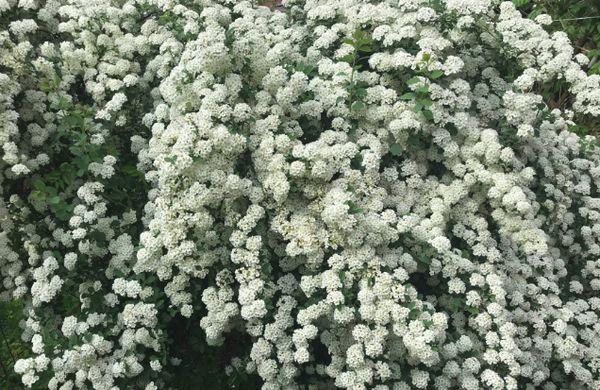
The rose leaflet becomes dangerous when the thermometer reaches +13 ° C. She rolls the sheets into a tube, makes holes in them, from which the argument begins to dry. For the rehabilitation of spirea, a mixture of 0.7% "Bitoxibacillin" and 0.03% "Pirimor" is used. These drugs work well on other pests.
As a preventive measure, timely fertilization is used, and spirea is planted as far as possible from a source of potential danger.
Breeding methods
Arguta reproduces well by cuttings, as well as by layering.
Cuttings
Spirea cuttings are harvested in the summer in 2 ways:
- They are cut from slightly lignified shoots of this season and kept in a solution of humic fertilizer or root-stimulating composition for about 12 hours, then they are placed in the soil by 3.5 cm.Roots should appear by autumn.
- Prepare green cuttings 8-9 cm long in early June. The lower leaves are removed, and the shoot is buried by 20 mm. Transplanted next season.
Do not forget to water the spirea.
Layers
In the spring, when leaves appear, the branches located on the edge of the spirea are bent and lowered into shallow trenches previously dug, then sprinkled with soil.
Water and apply organic fertilizers 1 time / 1 week. Roots will appear by next spring. At the beginning of April, the spirea can already be planted in a permanent place.
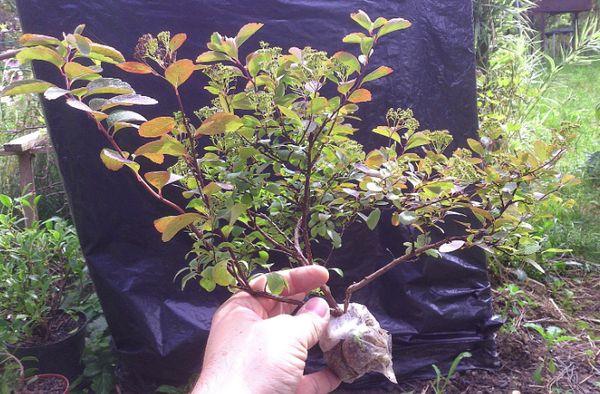
Possible growing difficulties
When growing spirea, there are no difficulties, however, there are some nuances of care that you should know:
- Arguta, planted in autumn, may die in the first winter, since the young shrub is not strong enough, unlike the adult meadowsweet, and it needs to create comfortable conditions.
- You can not cut off faded branches, this will provoke the growth of lateral shoots and spoil the overall appearance.
In other matters, there will be no problems with spirea.
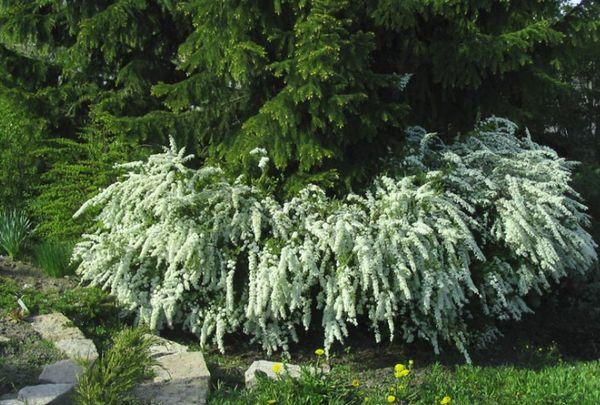
Use in landscape design
When decorating their site, gardeners focus on undemanding plants that have high decorative properties. The argument meets these criteria:
- resistant to disease;
- easily tolerates winter frosts.
From it you can create an elegant hedge or various compositions from representatives of different varieties. Arguta goes well with deciduous and coniferous trees. In addition, spirea branches are used in bouquets.
